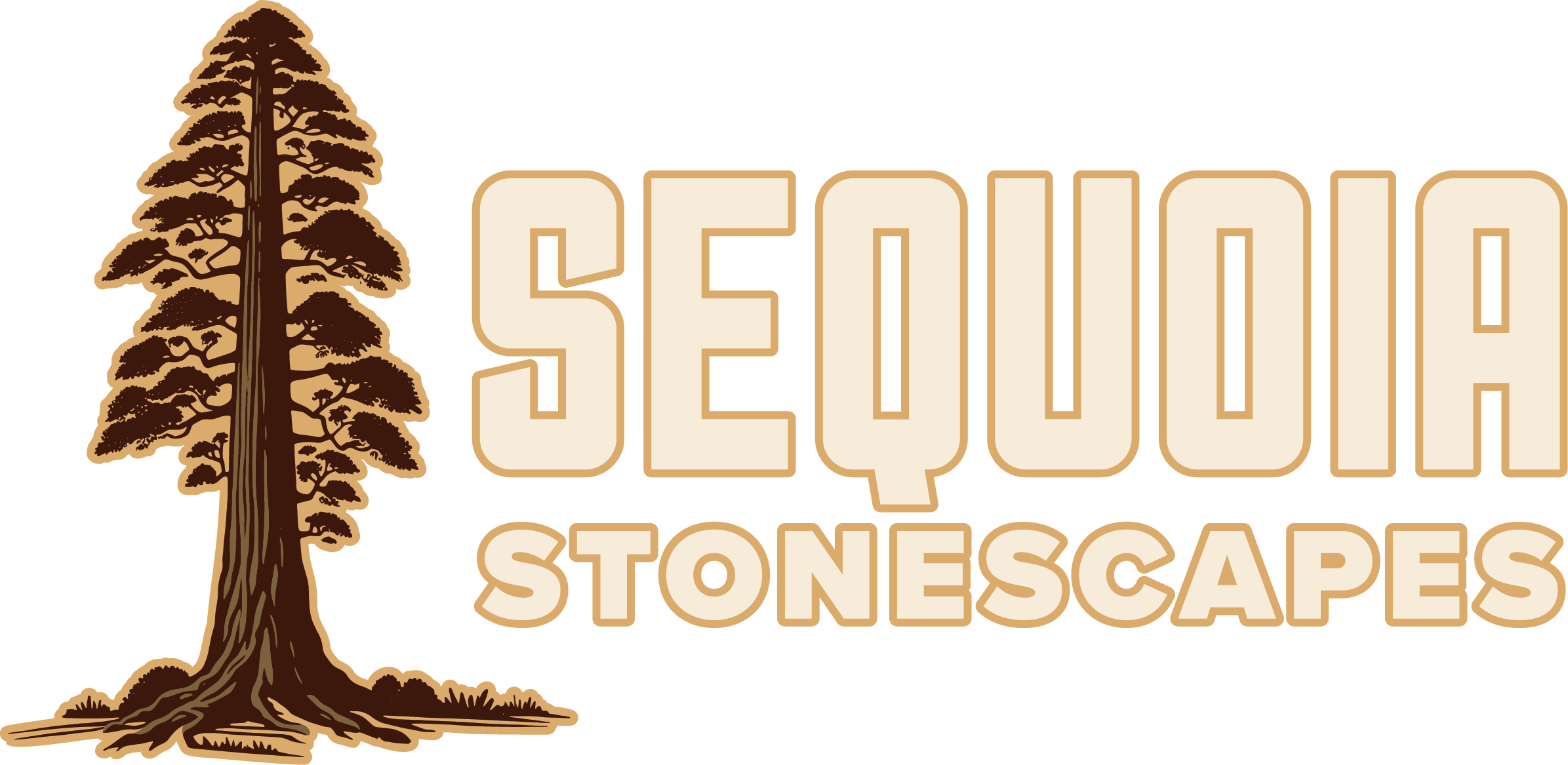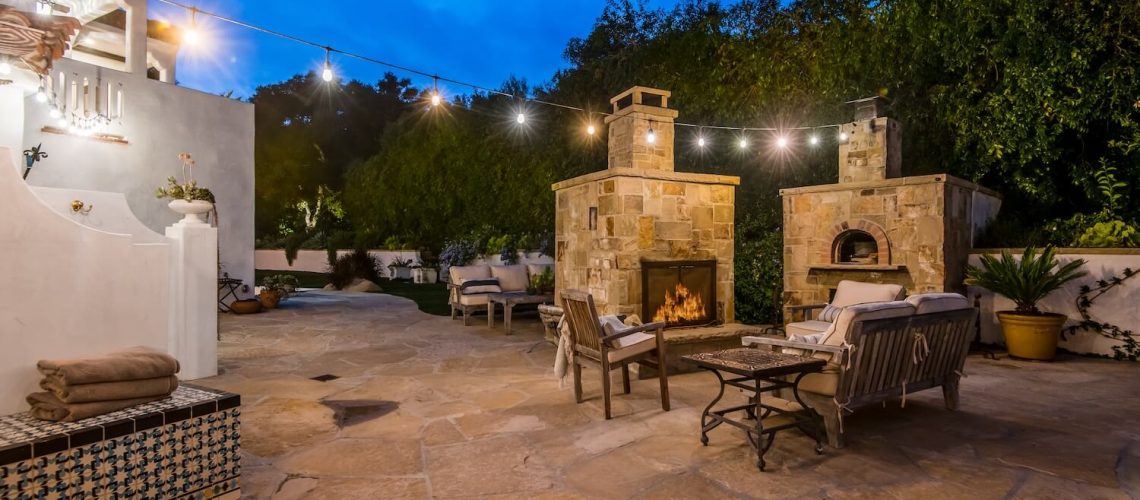When it comes to enhancing your outdoor living space, few additions offer the warmth, ambiance, and social atmosphere quite like a fire feature. Whether you’re hosting a lively gathering, enjoying a quiet evening under the stars, or simply basking in the beauty of a glowing fire, an outdoor fire feature creates a focal point that draws people together.
Two of the most popular choices for outdoor fire features are outdoor fireplaces and paver fire pits.
Both options are constructed from pavers, a highly durable and versatile material, and each offers unique benefits. However, the decision between an outdoor fireplace and a paver fire pit depends on various factors such as your desired aesthetic, functionality, installation complexity, and budget. In this article, we’ll take a deep dive into both options, exploring their features, benefits, and what makes them ideal for specific outdoor spaces. We’ll also discuss the importance of hiring professional paver installation services to ensure the quality, safety, and longevity of your fire feature.
1. Aesthetic Appeal: Which Fire Feature Complements Your Backyard Style?
Outdoor Fireplace: A Majestic Centerpiece
An outdoor fireplace is often considered the epitome of elegance when it comes to backyard fire features. Constructed from high-quality pavers, an outdoor fireplace stands tall with a traditional or contemporary design that draws the eye and provides an impressive focal point. The versatility of paver materials, from natural stone to more modern, sleek finishes, allows homeowners to choose a style that perfectly matches their existing landscape design.
In addition to providing warmth and ambiance, the outdoor fireplace becomes a natural gathering spot. Imagine a cold winter evening, with friends and family sitting around the fire, enjoying the flickering flames while sheltered from the wind. The tall design of the fireplace helps disperse the heat efficiently and extends the comfort zone around the fire. For those who love to entertain, an outdoor fireplace is an ideal investment.
Paver Fire Pit: A Cozy, Intimate Gathering Spot
While an outdoor fireplace exudes grandeur, a paver fire pit offers a more casual, cozy atmosphere. Typically lower to the ground than a fireplace, a paver fire pit provides a comfortable and inviting space for guests to gather around. The design of a fire pit is often circular or square, and it is typically surrounded by seating to create a more intimate setting. The flame of the fire rises naturally from the center, providing warmth directly to those seated around the fire.
The appeal of a paver fire pit lies in its simplicity and the intimate nature of the design. For families, small gatherings, or anyone seeking a laid-back environment, a paver fire pit is a great way to enjoy a fire without the formality of an outdoor fireplace.
Which is Right for You?
The aesthetic choice between a fireplace and a fire pit is largely based on the mood you want to create in your backyard. If you’re looking for a striking, high-end feature that serves as a centerpiece of your outdoor space, an outdoor fireplace will provide the visual drama and elegance you’re seeking. On the other hand, if you’re aiming for a more casual, cozy gathering area with a focus on comfort, a paver fire pit may be the better fit.
Key Takeaway: Outdoor fireplaces offer grandeur and sophistication, while paver fire pits provide warmth and intimacy. The choice depends on your space, budget, and the atmosphere you wish to create.
2. Functionality and Heat Distribution: Staying Warm in Your Outdoor Space
Outdoor Fireplace: Efficient, Year-Round Comfort
The functionality of an outdoor fireplace is one of its greatest advantages. With its towering design and built-in chimney system, the heat produced by an outdoor fireplace is evenly distributed around the space. As the fire burns, the heat rises up the chimney and radiates outward, effectively warming a larger area around the fireplace. This makes an outdoor fireplace perfect for colder climates or for anyone who wants to use their outdoor space year-round, even during the chilly months of fall and winter.
The design of the chimney helps to direct smoke away from the seating area, ensuring that your guests won’t be overwhelmed by smoke while enjoying the warmth. With a controlled environment, you can easily regulate the size of the fire, adjusting the heat level based on the season or your preferences. Additionally, the fireplace can be used for cooking or even as a decorative feature, depending on the design.
Paver Fire Pit: Intimate Heat for Close Gatherings
While a paver fire pit provides significant warmth, the heat distribution is more localized. Fire pits are generally closer to the ground and do not have a chimney to direct the smoke. As a result, the heat radiates directly upwards from the fire, making it perfect for smaller groups who want to enjoy the warmth of the fire up close. The low-to-the-ground design of a paver fire pit encourages guests to gather around, sit comfortably, and engage in conversations.
One of the key advantages of a paver fire pit is its versatility. You can place it in various locations within your backyard, whether nestled within a seating area or at the center of a larger gathering space. However, the heat may not reach as large an area as an outdoor fireplace. If you’re in an area with a colder climate, this may limit the usability of the fire pit in winter months.
Key Takeaway: Outdoor fireplaces are ideal for providing even heat distribution and comfort in larger spaces or colder climates, while paver fire pits are better suited for smaller gatherings and warmer evenings.
3. Installation Process: DIY vs Professional Installation
Outdoor Fireplace: A Complex, Professional Installation
While it’s possible to attempt a DIY outdoor fireplace installation, it’s highly recommended to hire a professional for this project. An outdoor fireplace involves complex construction, including digging foundations, creating a solid base, installing fire-resistant materials, and constructing a functional chimney or flue system. Each component must be built with precision to ensure the structure is stable, safe, and can withstand the elements.
A professional installer will ensure that all materials are properly integrated, and they will take into account local codes and safety regulations for outdoor fireplaces. The installation process can take several days depending on the size and design of the fireplace. A professional team will work efficiently to ensure that your fireplace is constructed to last for years to come.
Paver Fire Pit: Easier Installation with a DIY Option
Installing a paver fire pit is relatively simpler than building an outdoor fireplace, which makes it a popular choice for DIY enthusiasts. The process generally involves digging a shallow hole, laying down a gravel or sand base, and stacking the pavers in the desired shape (typically circular or square). Because fire pits don’t require chimneys or complex foundations, the installation can often be completed in a day or two.
That said, hiring a professional installer for a paver fire pit can still bring significant advantages. Professionals have the expertise to create a perfectly level and stable foundation, ensuring that the fire pit will remain in good condition over time. They will also help with choosing the best materials for your fire pit, ensuring it blends seamlessly with your backyard design.
Key Takeaway: Outdoor fireplaces require professional installation due to their complexity, while paver fire pits can be DIY projects but benefit from professional expertise for durability and design.
4. Durability and Maintenance: Keeping Your Fire Feature in Top Shape
Outdoor Fireplace: Long-Lasting with Regular Maintenance
An outdoor fireplace made of pavers is built to last. The high-quality materials used in construction—such as natural stone, brick, or concrete—are weather-resistant and durable. With proper care, an outdoor fireplace can stand the test of time, providing years of use and enjoyment. However, regular maintenance is necessary to keep it in optimal condition.
Chimney maintenance is one of the most important aspects of fireplace care. You’ll need to regularly clean the chimney to remove soot and debris that can accumulate over time, reducing the efficiency of the fireplace and posing potential fire hazards. Additionally, inspect the structure for any cracks or wear in the paver materials, particularly after severe weather. If left unchecked, minor issues could develop into more significant problems.
Paver Fire Pit: Low-Maintenance and Resilient
Paver fire pits require less maintenance than outdoor fireplaces, largely due to their simpler design and lack of a chimney. The primary maintenance task for a paver fire pit is ensuring that the pavers remain secure and level. Over time, the stones may shift due to weather conditions, but regular inspection and re-leveling can help maintain the integrity of the structure.
Another consideration for paver fire pits is the removal of ash and debris. Regularly cleaning out the fire pit after each use will help maintain its aesthetic appeal and prevent any buildup that could damage the pavers. With proper care, a paver fire pit will continue to function beautifully for many years.
Key Takeaway: Both outdoor fireplaces and paver fire pits are durable and long-lasting, but outdoor fireplaces require more regular maintenance due to the chimney system. Paver fire pits, while requiring less upkeep, still benefit from occasional care.
5. Cost Considerations: Budgeting for Your Dream Fire Feature
Outdoor Fireplace: A Larger Investment
Outdoor fireplaces tend to be more expensive than paver fire pits. The cost can vary depending on the size, design, and materials used. For example, natural stone materials like granite or limestone can drive up the price, as can custom features like built-in seating or complex masonry work. In addition to the materials, professional installation can add a significant cost due to the labor and expertise required.
That said, an outdoor fireplace is a long-term investment that can add substantial value to your home. The increased curb appeal and functionality can make your property more desirable, especially if you live in a region with cooler temperatures. Additionally, an outdoor fireplace has the potential to be a year-round feature, making it a worthwhile investment for many homeowners.
Paver Fire Pit: A Budget-Friendly Option
Paver fire pits are typically more affordable than outdoor fireplaces, making them a great choice for homeowners on a budget. The cost of a paver fire pit will depend on the size, design, and type of pavers used, but generally, the installation process is quicker and less complex, resulting in lower overall costs. You can even choose to install the fire pit yourself, further reducing the cost.
However, it’s important to consider the value a paver fire pit adds to your home. While it may not have the grand presence of an outdoor fireplace, a paver fire pit enhances your outdoor living space, creating a cozy and functional area for entertaining or relaxing.
Key Takeaway: Outdoor fireplaces are a more significant investment but can add considerable value to your home, while paver fire pits offer a budget-friendly option without sacrificing style or functionality.
Fire Pit Conclusion
When deciding between an outdoor fireplace and a paver fire pit, the decision ultimately depends on your personal preferences, budget, and the type of atmosphere you want to create in your backyard. Outdoor fireplaces offer elegance, warmth, and the ability to be used year-round, making them a great choice for homeowners looking to elevate their outdoor living space. Paver fire pits, while more affordable and easier to install, provide a cozy, casual gathering space ideal for small groups.
Regardless of which fire feature you choose, hiring professional paver installation services is crucial to ensuring the durability, safety, and aesthetic appeal of your fire feature. Expert installation guarantees that your fire feature is built to last, providing years of enjoyment and creating a stunning focal point for your backyard.

